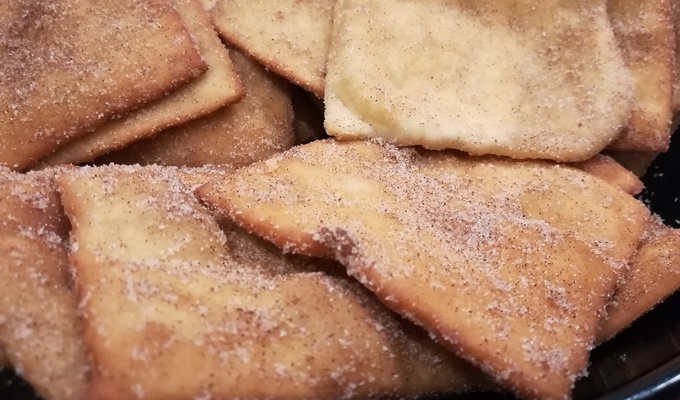A sopaipilla, sopapilla, sopaipa, or cachanga is a kind of fried pastry and a type of quick bread served in several regions with Spanish heritage in the Americas. The word sopaipilla is the diminutive of sopaipa, a word that entered Spanish from the Mozarabic language of Al-Andalus. The original Mozarabic word Xopaipa was used to mean bread soaked in oil. The word is derived in turn from the Germanic word suppa, which meant bread soaked in liquid.
A sopaipilla is traditionally made from leavened wheat dough (or a mixture of wheat flour and masa harina) to which some shortening such as butter is added. After being allowed to rise, the dough is rolled into a sheet that is then cut into circular, square or triangular shapes, 8–10 cm in size for the longest dimension (if intended for a dessert) or 15–20 cm (if intended to be stuffed for a main course). These pieces are then deep-fried in oil, sometimes after being allowed to rise further before frying: the frying causes them to puff up, ideally forming a hollow pocket in the center.
